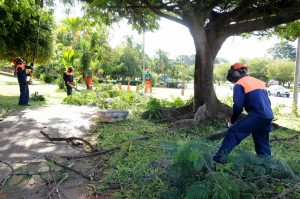Wastewater treatment has sewage sludge (SWS) as the primary solid product. Producing biofuels from SWS through pyrolysis is based on the circular economy and biorefinery principles, thus offering an innovative way to create building blocks and combustibles, which is an environmentally friendly alternative for management. In this work, different raw sludges, primary (PS), secondary (SS), and tertiary sludges (TS), were collected after the primary, secondary, and tertiary sedimentation (overpassing the anaerobic digestion and dewatering process), conferring a feedstock with a higher organic matter content and saving costs. The PS, SS, and TS were pyrolyzed at 450 ºC in N2 atmosphere for biochar and bio-oil production and characterization. The product yields were 51.88–57.90%, 5.02–9.81%, and 32.51–42.90% for biochar, bio-oil, and py-gas. The SS biochar presented lower ash content and superior mass and energy yields, calorific power, fuel ratio, and more coal-like fuel than PS and TS. Energy-dispersive X-ray spectroscopy analysis showed an overall composition without potentially toxic metals for solids. Chars formed after the pyrolysis presented irregular macro- and mesopores and a bulkier crystallographic profile. The combustion behavior of the produced biochar reported a solid fuel capable of more stable combustion than raw material. Infrared spectroscopy and nuclear magnetic resonance of extracted oil from raw sludge and bio-oils present carbon sp3, sp2, and carbonyls that refer to carboxylic acids, a potential feedstock in further second-generation waste biorefineries. The investigation provides insights into alternative routes for biofuels that may support growing cities in their waste mitigation and energy demands.




